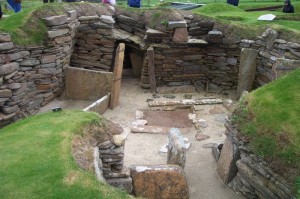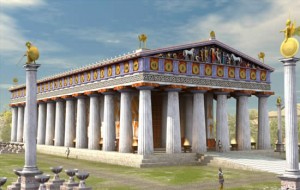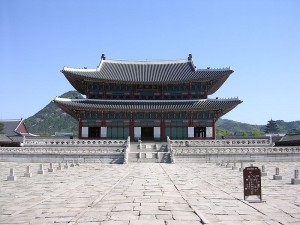RESEARCH
HISTORY:
- Originates in Southeast Asian, showing its cultural perspectives after 8,000 BC – 2,000 BC. Mainly constructed of a walk and a roof made from stone and dirt and were single floor structures. Stone Henge is one of the most famous examples of Neolithic architecture, or the society of Skara Brae. Neolithic Architecture is one of the oldest and simple basic needs of a home (roof over your head).
- Ancient Egyptian Architecture Neolithic Architecture (stone age)
- This Fantastic era of architecture catches my attention and respect for the Egyptian generations because, of the dedication, the soul, and life put into their progressive monuments. History says that the first erected pyramid dated back since 2530 BCE-2611 BCE with up to 90,000 people that worked on the great Pyramid of Djoser. The primary building materials applied on their structures were sun baked mud brick and stone with options of limestone, sandstone or even granite with a scarce supply of wood. Even though their still exist Egyptian monuments many of the structures were flooded from the water of the Nile River that was used to make the mud material. Even though the flood destroyed many communities some prevailed and were left to continue as today’s historical monument which is why I applaud this style. I enjoy its character because the purity in its materials, the beautiful hieroglyphs and the simplicity in a hot and dry climate.

- This Fantastic era of architecture catches my attention and respect for the Egyptian generations because, of the dedication, the soul, and life put into their progressive monuments. History says that the first erected pyramid dated back since 2530 BCE-2611 BCE with up to 90,000 people that worked on the great Pyramid of Djoser. The primary building materials applied on their structures were sun baked mud brick and stone with options of limestone, sandstone or even granite with a scarce supply of wood. Even though their still exist Egyptian monuments many of the structures were flooded from the water of the Nile River that was used to make the mud material. Even though the flood destroyed many communities some prevailed and were left to continue as today’s historical monument which is why I applaud this style. I enjoy its character because the purity in its materials, the beautiful hieroglyphs and the simplicity in a hot and dry climate.
- Greek Architecture
- The style of great wisdom and power the gods lived a wonderful life of symbolic meaning that I would enjoy to experience. Ancient Greek architecture is well known from Athena (Parthenon Acropolis), Zeus (Temple of Zeus at Cyrene), Poseidon (Temple of Poseidon at Sounion) and the Temple of Olympian Zeus. Greece was divided into two eras, the Hellenic (900 BC-323 BC) ending with Alexander the Great and the Hellenistic (323 BC- AD 30) eras. Following up with eras the civilization was divided into the Minoan and the Mycenaean; Minoan skills in pottery and richly decorated palaces and the citadels, fortifications and tombs were picked up from the Mycenaean’s. Later in history as the Romans conquered Greece they redeveloped their skills to finish where Greek left off with the arch and dome which has big influence on modern day’s structures sill.

- The style of great wisdom and power the gods lived a wonderful life of symbolic meaning that I would enjoy to experience. Ancient Greek architecture is well known from Athena (Parthenon Acropolis), Zeus (Temple of Zeus at Cyrene), Poseidon (Temple of Poseidon at Sounion) and the Temple of Olympian Zeus. Greece was divided into two eras, the Hellenic (900 BC-323 BC) ending with Alexander the Great and the Hellenistic (323 BC- AD 30) eras. Following up with eras the civilization was divided into the Minoan and the Mycenaean; Minoan skills in pottery and richly decorated palaces and the citadels, fortifications and tombs were picked up from the Mycenaean’s. Later in history as the Romans conquered Greece they redeveloped their skills to finish where Greek left off with the arch and dome which has big influence on modern day’s structures sill.
- Southern Asia’s architecture
- This region of architecture was a progressive development to gather ideas from its pre-Islamic predecessor such the geometrical and repetitive shapes and forms and the surfaces that were decorated with glazed tiles, carved stucco, patterned brickwork, and calligraphy. Traveling down to Eastern Asia we go into the Bronze Age era well known for its horizontal and vertical temple appearances complimented by its well-chosen decision on roofing style to show to show architectural progression in Asia.

- This region of architecture was a progressive development to gather ideas from its pre-Islamic predecessor such the geometrical and repetitive shapes and forms and the surfaces that were decorated with glazed tiles, carved stucco, patterned brickwork, and calligraphy. Traveling down to Eastern Asia we go into the Bronze Age era well known for its horizontal and vertical temple appearances complimented by its well-chosen decision on roofing style to show to show architectural progression in Asia.
- European and Colonial architecture
- Colonial architecture and the renaissance period I see as my favorite because it has connection with one of my favorite writers, Shakespeare, and because it is the golden age for the architecture progression. This period is widely known for its castle like appearance and/or Queen and Kingship democracy. During the Medieval period its architecture frame was integrated with revived concepts from the Greek and Roman time period. The structures that were designed were fortified castles for its military uses, high constructed cathedrals and spacious dome like hall rooms with the beginning of semi-circular arches. The eras color scheme is kind of dull, but it’s not too bright or too dark and its schematic design is very influential to our current designs.

- Colonial architecture and the renaissance period I see as my favorite because it has connection with one of my favorite writers, Shakespeare, and because it is the golden age for the architecture progression. This period is widely known for its castle like appearance and/or Queen and Kingship democracy. During the Medieval period its architecture frame was integrated with revived concepts from the Greek and Roman time period. The structures that were designed were fortified castles for its military uses, high constructed cathedrals and spacious dome like hall rooms with the beginning of semi-circular arches. The eras color scheme is kind of dull, but it’s not too bright or too dark and its schematic design is very influential to our current designs.
Sources: